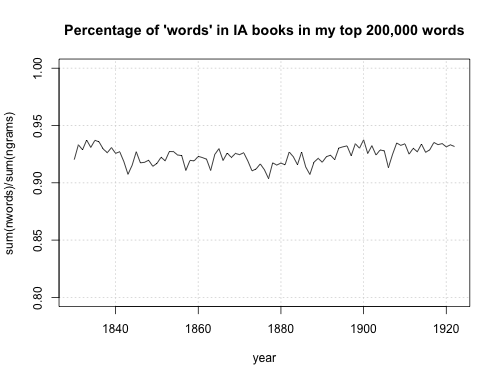I have my database finally running in a way that lets me quickly select data about books. So now I can start to ask questions that are more interesting than just how overall vocabulary shifted in American publishers. The question is, what sort of questions? I'll probably start to shift to some of my dissertation stuff, about shifts in verbs modifying "attention", but there are all sorts of things we can do now. I'm open to suggestions, but here are some random examples:
1. How does the vocabulary used around slavery change between the 1850s and the 1890s, or the 1890s and the 1920s? Probably the discursive space widens--but in what kind of ways, and what sorts of authors use rhetoric of slavery most freely?
2. How do various social and political words cluster by book in the progressive era? Maybe these are words that appear disproportionately often in a sentence with "reform." Can we identify the closeness of ties between various social movements (suffragism, temperance, segregation, municipal government) based on some sort of clustering of co-mentions in books,
as I did for the isms?
Questions don't have to be historical, either: they can plug in to other American Studies areas:
3. What different sorts of words are used to modify 'city' or 'crowd' in the novels of (say) Howells, James, and Dreiser? How does it change over time within some of them?
4. What sorts of books discuss the plays of Shakespeare between 1850 and 1922--can we identify a shift in a) the sorts of books writing about him that could confirm some Highbrow/Lowbrow stuff, or b) the particular plays that get mention or praise?








